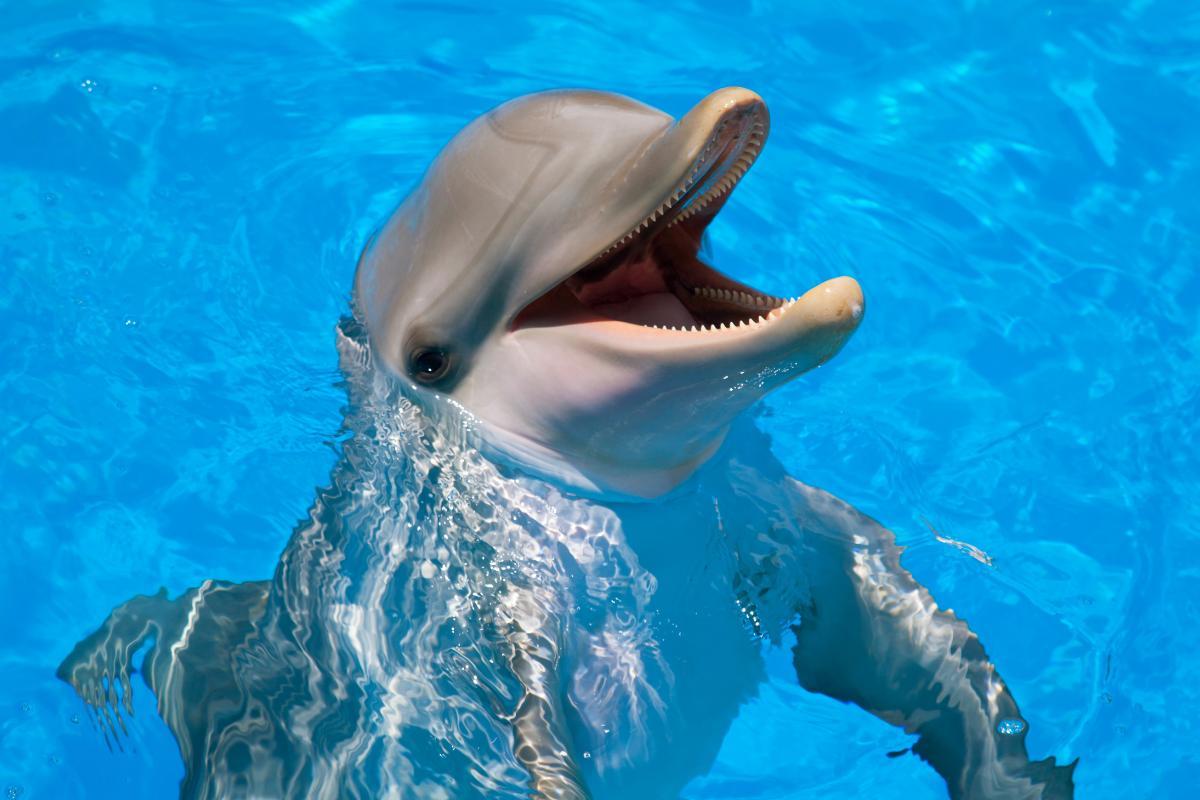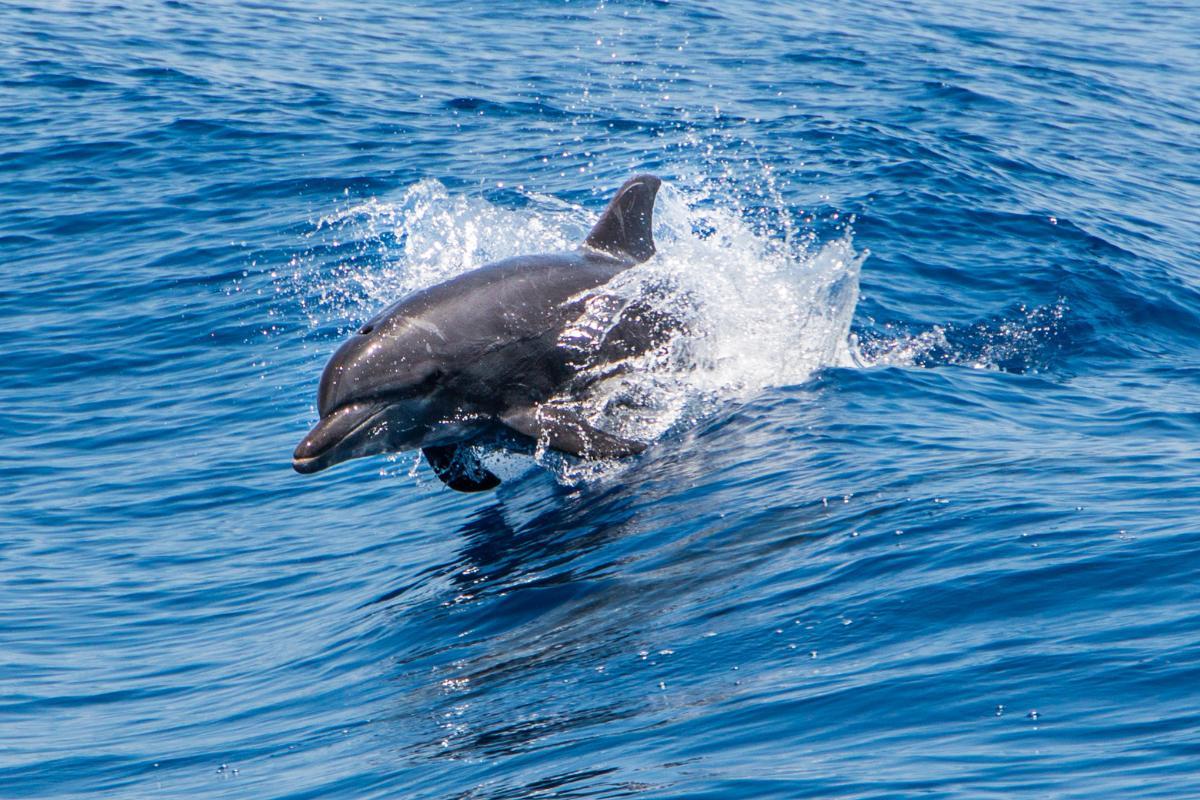Are Dolphins Dangerous to Humans?


Dolphins are carnivorous marine mammals. While they mainly feed on cephalopods and fish, some are known to kill other mammals. They can sometimes even kill large animals such as porpoises or even other dolphins, despite not feeding upon them. Many tours offer experiences where you can swim with certain species of dolphins. They are known for their connectivity with humans, something which has continued throughout recorded history. However, dolphins have acute predatory instincts and have been known to show aggressiveness. At thedailyECO, we discover how this might manifest by asking are dolphins dangerous to humans?
- Are dolphins dangerous?
- Are some dolphins more dangerous than others?
- Extreme captivity conditions affect behavior
- Dolphins have predatory instincts and aggression.
- Contact with dolphins poses a risk to their and human health
- Dolphin trade negatively impacts family structure
- The duality of intelligence
- Interactions with other animals
- Astute observers
- Documented violent incidents
Are dolphins dangerous?
Dolphins are carnivorous animals. While no dolphin species has humans as their prey, they are agile hunters who can often kill animals that are even larger than themselves. Some of us may be good swimmers, but humans are terrestrial mammals and we do not live in the marine and freshwater habitats of dolphin species.
Despite these factors, there are often times when we may come in contact with dolphins. Many of these are heartwarming experiences which help show our connection with nature. However, it is possible than danger may arise. Dolphins can be dangerous to humans in the right circumstances.
Most cases of dolphins killing humans have been orcas (Orca orca) killing while in captivity. Few instances have occurred in the wild, meaning dolphins aren't considered a direct threat to humans. Despite this, there are factors to keep in mind concerning their potential danger.
Are some dolphins more dangerous than others?
When we talk about dolphins, the species which comes to mind for many is the common bottlenose dolphin (Tursiops truncatus). However, the types of dolphins around the world can vary greatly in size and appearance. Despite their common name, the killer whale (Orca orca) is actually a type of dolphin species. If you have ever seen a documentary of these animals hunting, you will know they are anything but pacific.
Some dolphins are known for having curved sides at the sides of their mouth. This gives them a unique ‘smiling’ appearance and makes them look as if they are happy. However, this is not an expression of emotion. It is an evolutionary adaptation, believed to be related to being more aerodynamic in the water and to help in the capture of prey.
The reason why it is important to make this distinction is that we cannot assume a dolphin is friendly, just because they appear to have a friendly face. If we encounter one in the wild, we always need to use caution, regardless of how docile they may appear.
Now we know that dolphins can be dangerous to humans, we look at some of the risk factors about these aquatic mammals.

Extreme captivity conditions affect behavior
Life in captivity is detrimental to dolphins. They are used to swimming great distances in the ocean. Even the largest tanks in captivity are miniscule when compared to their natural habitats, especially oceanic dolphins. Such reduced habitat size can cause serious stress for their physical and mental well-being. Not only are dolphins unable to carry out their natural behaviors such as traveling long distances, but they cannot interact like they would in the wild.
The lack of adequate space in captivity can lead to self-harming and aggressive behavior in dolphins. This can turn their environment into a potentially dangerous space. Even when dolphins have had seemingly good relationships with their handlers, there have been instances of them attacking and even killing them.
Dolphins have predatory instincts and aggression.
Dolphins are wild predators with natural instincts that can become aggressive, especially when threatened. Despite being bred in captivity, dolphins are not domesticated animals. There are numerous documented cases of aggression towards humans, such as biting and pushing. These interactions can result in serious injuries. It is critical that people recognize the risk involved in swimming with these inherently wild animals.

Contact with dolphins poses a risk to their and human health
Interactions with dolphins in captivity are not only potentially dangerous to humans, but can also affect the health of the dolphins. Tanks often contain chemicals such as chlorine that can cause burns to dolphin skin and eyes. Additionally, exposure to bacteria and contaminants in their environment can transmit diseases to humans. The combination of physical danger and health hazards highlights the need to avoid these direct contact experiences.
Dolphin trade negatively impacts family structure
The captive dolphin trade often involves separating calves from their mothers, which destroys dolphin families. Not only is this process cruel, it also increases infant mortality by depriving the calves of learning essential survival skills. Dolphins in captivity are forced to interact with others they don’t know, which can lead to aggression between them. This disruption to their social structure adds another level of danger to both the dolphins and the humans watching them.
The duality of intelligence
Dolphins are considered one of the most intelligent animals on the planet, comparable to humans and chimpanzees. This great intelligence does not always translate into positive behavior. They have been observed performing brutal acts, such as killing their own offspring or those other animals, displaying that their cognitive ability can be used for aggressive and manipulative purposes. This duality raises the question about the true nature of these mammals.

Interactions with other animals
In addition to their violent acts, dolphins also have a playful side that can be harmful to other species. For example, they have been observed mistreating puffer fish, using them as toys. By chewing and playing with them, dolphins cause the puffer fish to release toxins, potentially putting them in a state of euphoria.
This type of behavior highlights the lack of consideration for the well-being of other living beings, evidencing their potential to cause harm. It is wrong to think they would appraise the behavior of humans differently, even if there is evidence of them helping humans on occasion.
Learn more about their interactions with puffer fish in our article asking are dolphins getting high?
Astute observers
Dolphins are astute and strategic observers. They can spend days observing other species to identify their weaknesses and take advantage of any distractions. This predatory behavior adds another layer of danger, as their intelligence allows them to effectively plan and execute attacks. This manipulative ability makes them animals that should be treated with caution, especially in environments where they interact with humans.

Documented violent incidents
Research has documented incidents of aggression between dolphins and other animals, as well as mysterious dolphin deaths resulting from brutal attacks on one another. These events have led some researchers to label certain dolphins as ‘psychopathic’. We cannot apply the same social concepts to dolphins as we do to humans. This means we cannot call them psychotic for carrying out natural behaviors. Equally, we cannot apply human social concepts to behaviors we perceive as being more positive.
Despite their charismatic image, dolphins can be responsible for extremely violent and destructive behaviors, contributing to their reputation as dangerous animals. This can be seen in the recent news stories of orcas attacking and even sinking boats in Europe.
Discover more about this famous dolphin with our article explaining the differences between orcas and false killer whales.
If you want to read similar articles to Are Dolphins Dangerous to Humans?, we recommend you visit our Facts about animals category.
- Cappiello, J. (2023). 5 Reasons Not to Swim With Dolphins. World Animal Protection. https://www.worldanimalprotection.us/latest/blogs/5-reasons-you-should-never-swim-dolphins-vacation/
- Bichelman, J. (2024). The Surprising Reasons Dolphins Are Dangerous to Humans — and Why You Should Never Swim With Them. https://www.greenmatters.com/pets/are-dolphins-dangerous









